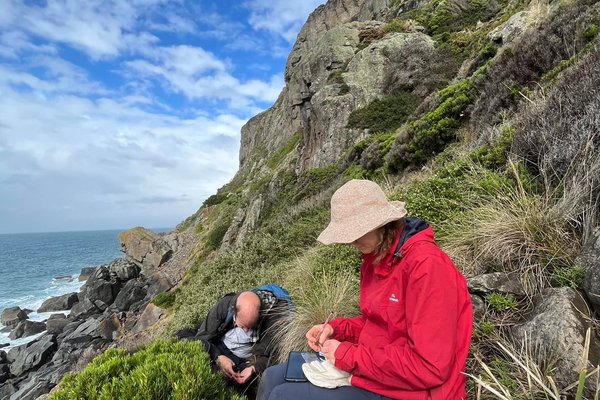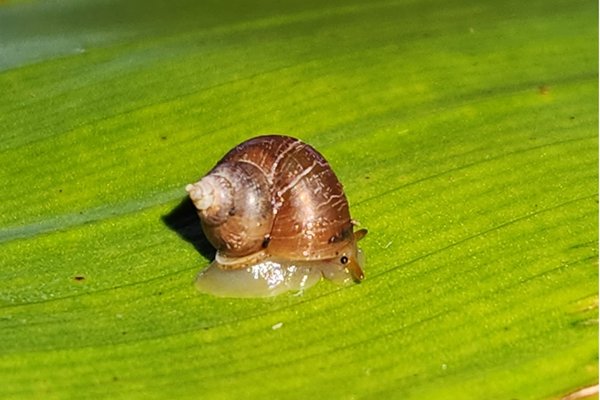Forging links and finding snails
With a velvet worm thrown in for good measure.
A chance contact from entomologist Murray Fletcher, a former Department of Primary Industries (DPI) researcher with a long history of association with the Australian Museum, prompted a short trip to Mt Canobolas near Orange in western NSW by a team from Malacology.

© Australian Museum
Murray’s contact was made initially because he had concerns about a velvet worm, Cephalofovea pavimenta, that I had described back in 1995. The vegetation on Mt Canobolas was very severely affected by an intense bushfire in February 2018 and Murray was concerned that the velvet worm may be extinct on the mountain.
Mountain tops often act as refugia for species that were possibly more widespread in the past and are among the first areas on land affected by climate change. As temperatures increase, cool climate habitats contract, making it very difficult for species adapted to these habitats.

© Australian Museum
For this reason, high altitude sites have become a focus for collecting land snails to document the molluscan fauna living in these places. Murray’s invitation prompted a short trip to collect snails and also see if we could find the endemic velvet worm (not a mollusc but lives in similar habitats to land snails).
We were privileged to meet up with local botanist, Dick Medd, and Rosemary Stapleton from the Orange Field Naturalists Club and were introduced to the local New South Wales Parks and Wildlife Service (NPWS) ranger, Steven Woodhall. Their familiarity with the mountain provided valuable local knowledge and Dick took us to a range of different sites representing varied vegetation types.

© Australian Museum
In two short days, we came up trumps on a few counts. Despite incredible dryness, we collected five species of land snail and one slug species, adding four species to the list of eight species previously known to occur at Mt Canobolas. We also found that despite the fire, the velvet worm was still thriving at both burnt and unburnt sites.

© Australian Museum
Importantly, we not only added information to our understanding of the fauna but made some valuable local contacts who will continue to look for land snails for us into the future.
We hope that this is the first of a longer term plan to survey more of these important mountain top ‘islands’ supporting relic faunal communities that include many unique and vulnerable species.
Dr Mandy Reid, Malacology Collection Manager










